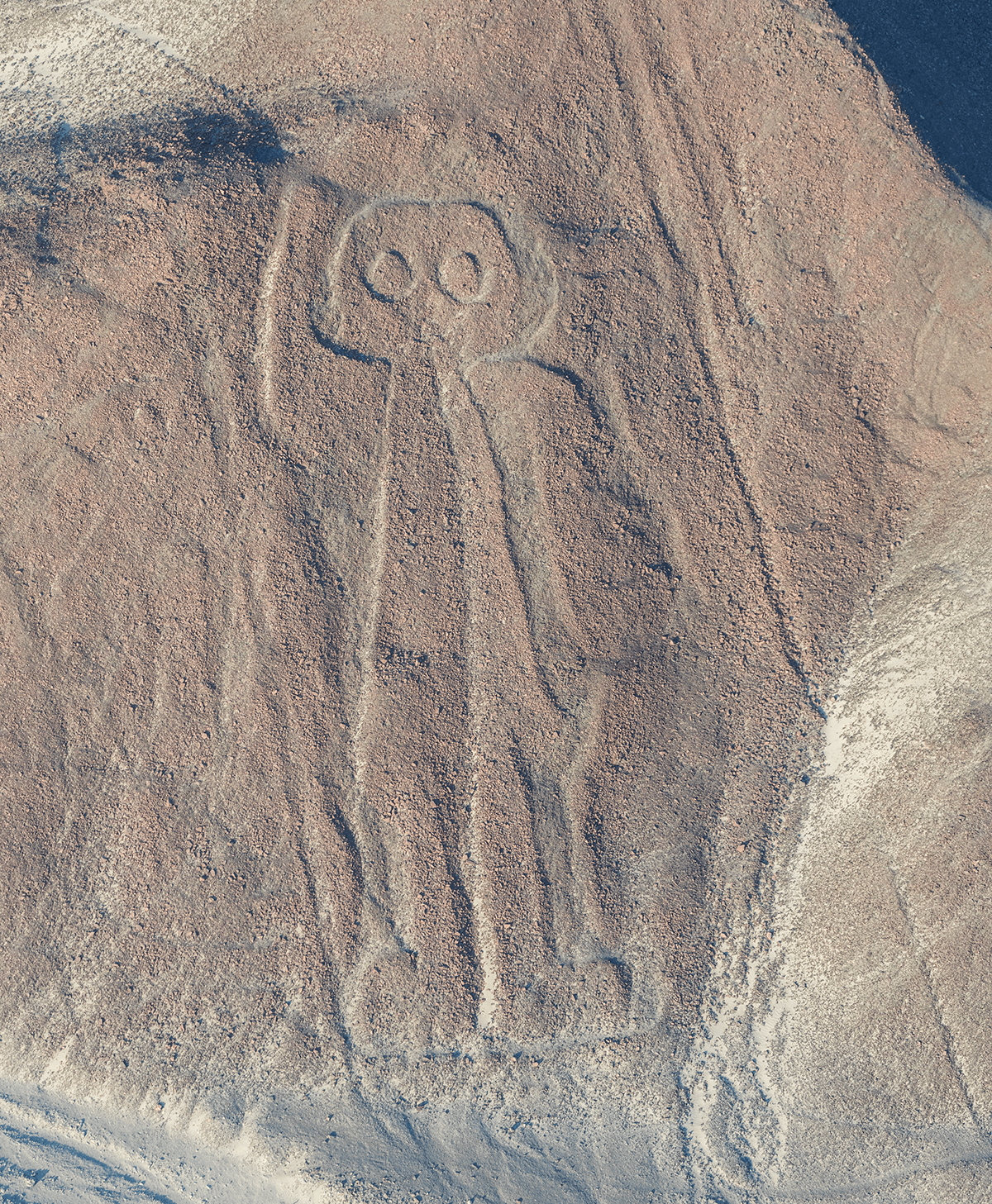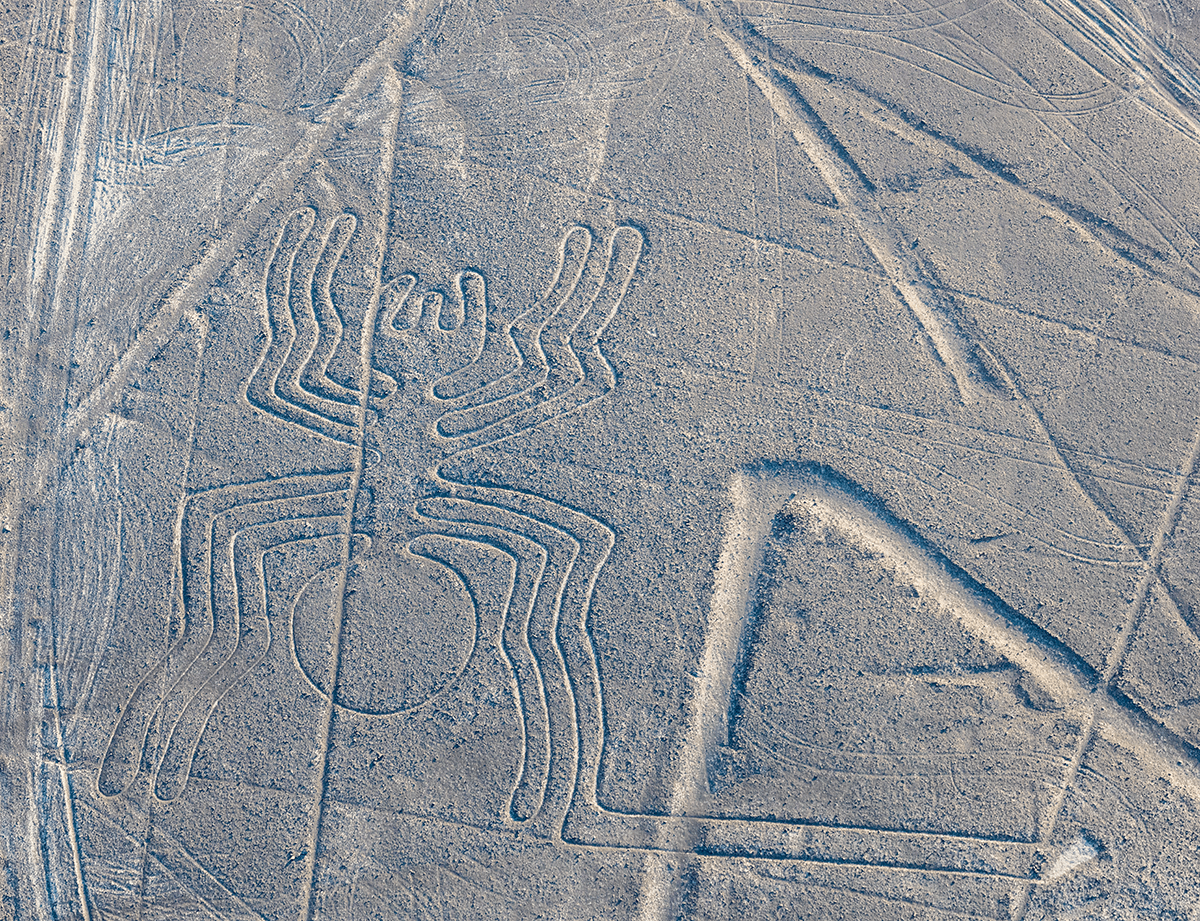Very few are those who know these spectacular figures drawn in the middle of the desert, in the openness; and although some can only be observed clearly from the air, since they can cover up to 300 m; they represent a cultural and historical icon, typical of Peru, and even more for its enigmatic forms.
Included in 1994 by UNESCO as a cultural heritage of humanity, these special figures are a true work of art, stylized on the mainland; noting the ancient civilizations and their impressive culture, which lies on the solid land of the Nasca desert.

The territory covered by these forms extends up to 450 km2, covering the Nasca desert area, in the Ica region and the Palpa valleys; being the points of access to the site: Lima, Arequipa and Cusco.
From the years 100 d.c and 600 d.c the Nasca culture inhabited the area where the figures are (hence its name). It is believed that, helped by ropes, stakes and strings, in order to not deviate the trajectory of the drawing, this civilization gave shape to 800 animal figures that still predominate in the region.

The studies of these forms were given at the beginning of 1547 by the Spanish historian and chronicler Cieza de León, without concluding with accuracy the mystery behind the figures. Many years of research went by; but it was not until 1949, when a German scientist María Reiche Neumann, determined that the state of these drawings responded to an ancient solar and lunar calendar to locate the best stages of harvest and seasons of rain.
We are talking about the largest scale calendar in the world, used in 550 AD by the civilization of Nasca for crops, because the area is arid, this method was very convenient for their purposes, also, this has helped the forms to be preserved through time.

Within the range of figures we can find from animals such as: heron, crane, pelican, hummingbird, monkey, whale, spider, lizard, iguana, llama, dog, among various geometric shapes such as triangles and squares. Also when digging in the lines, several relics have been found as offerings and materials that have served for the construction of the same as stakes and ropes.
Recently, Peruvian scientists discovered 50 new geoglyphs that supposedly correspond to ancient war populations such as Paracas and Topará.
Despite being on the list of cultural heritage sites of humanity, many incidents have occurred over time; leading to partially destroy some of the figures
However, the fascinating archeology exposed from the air, makes the experience pleasant and unique; also to be able to know closely these enigmatic forms that surround an extensive area of Peru and that are also an important part for humanity, as cultural heritage.
We have everything in our country, and do not stay without enjoying the best in culture with: Peru Cultural Journeys; traditional food in: Cuchara de Palo; rest and comfort in: Pisac Inn; therapy and relax in: Unucha Spa.
This article that an official source for Kawsaypaq